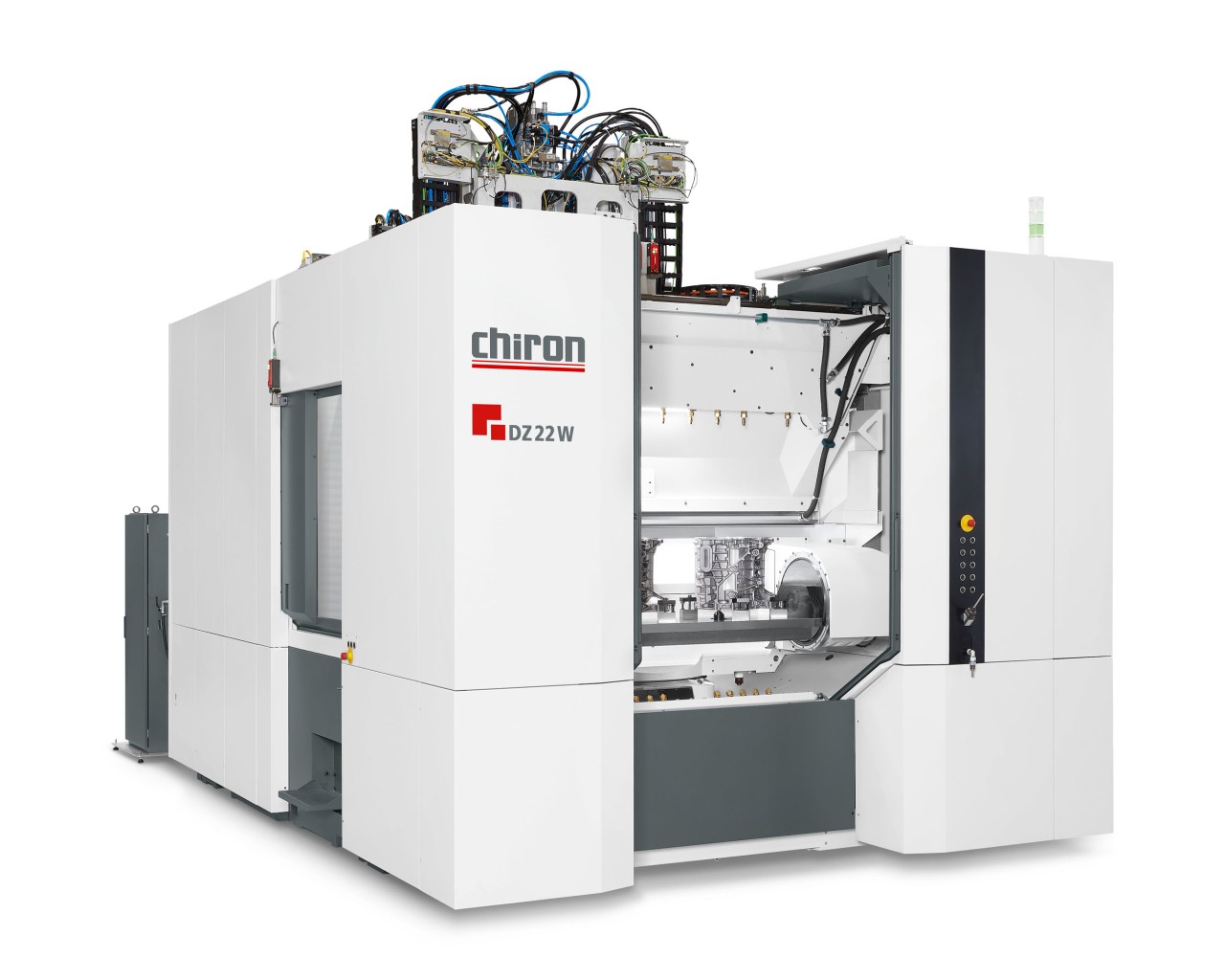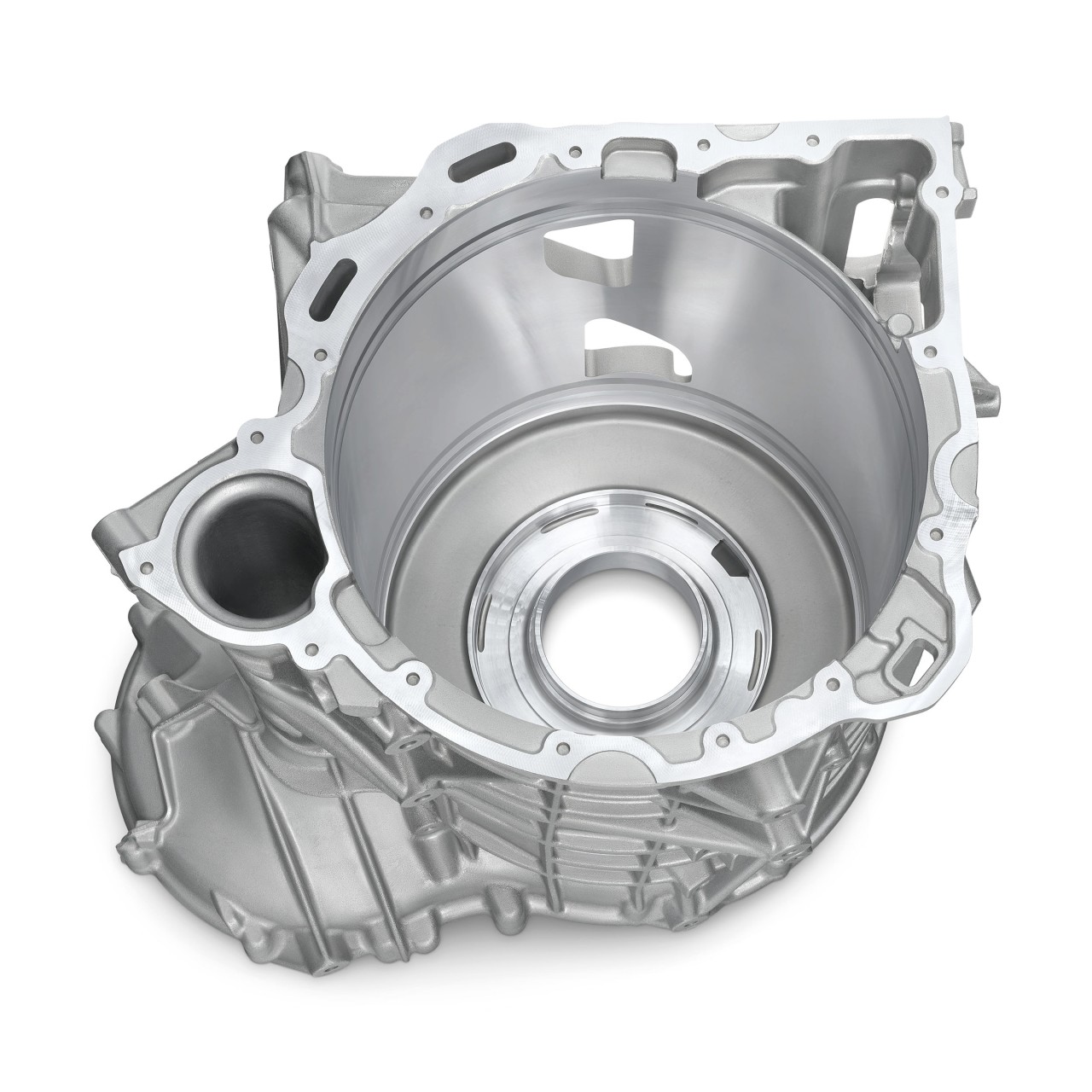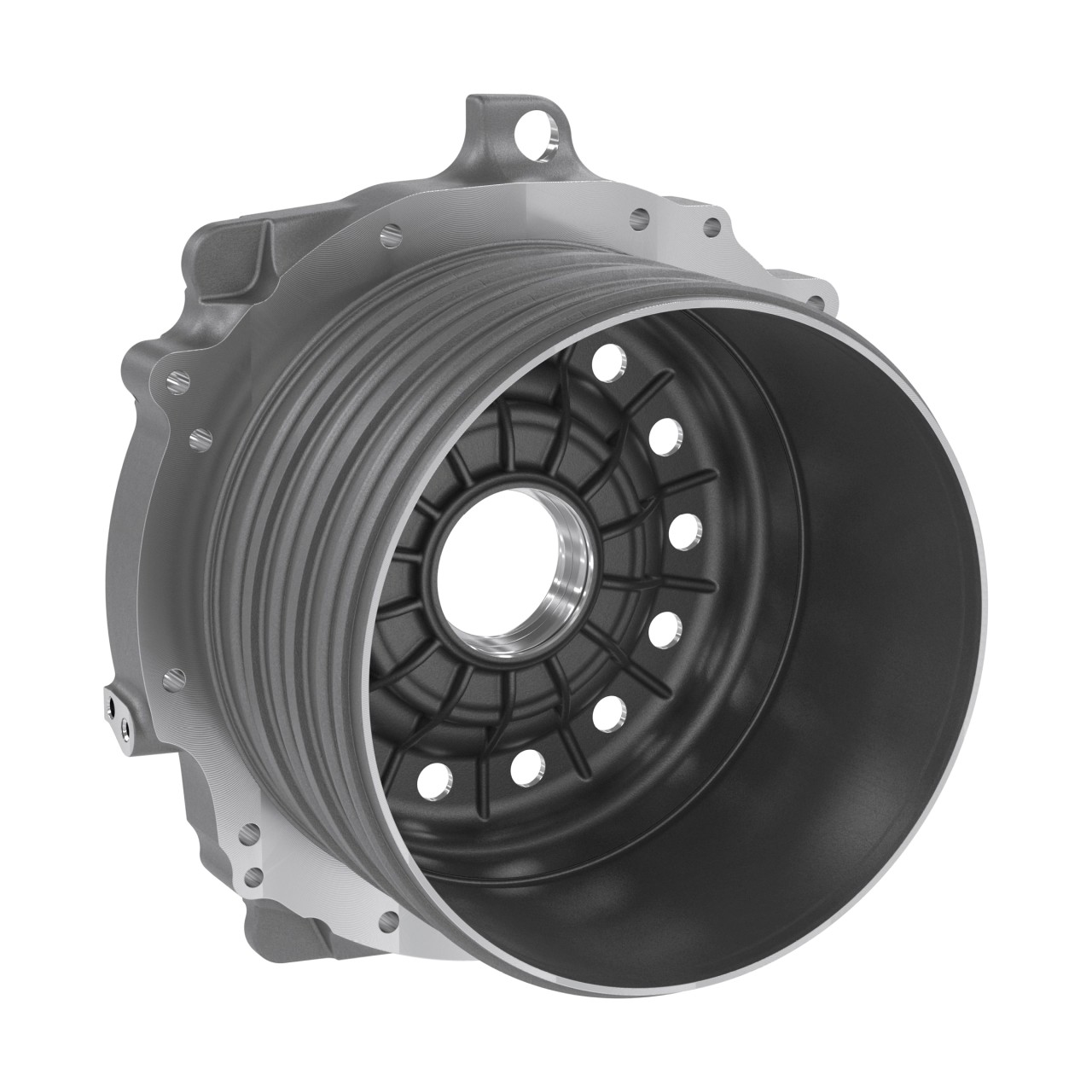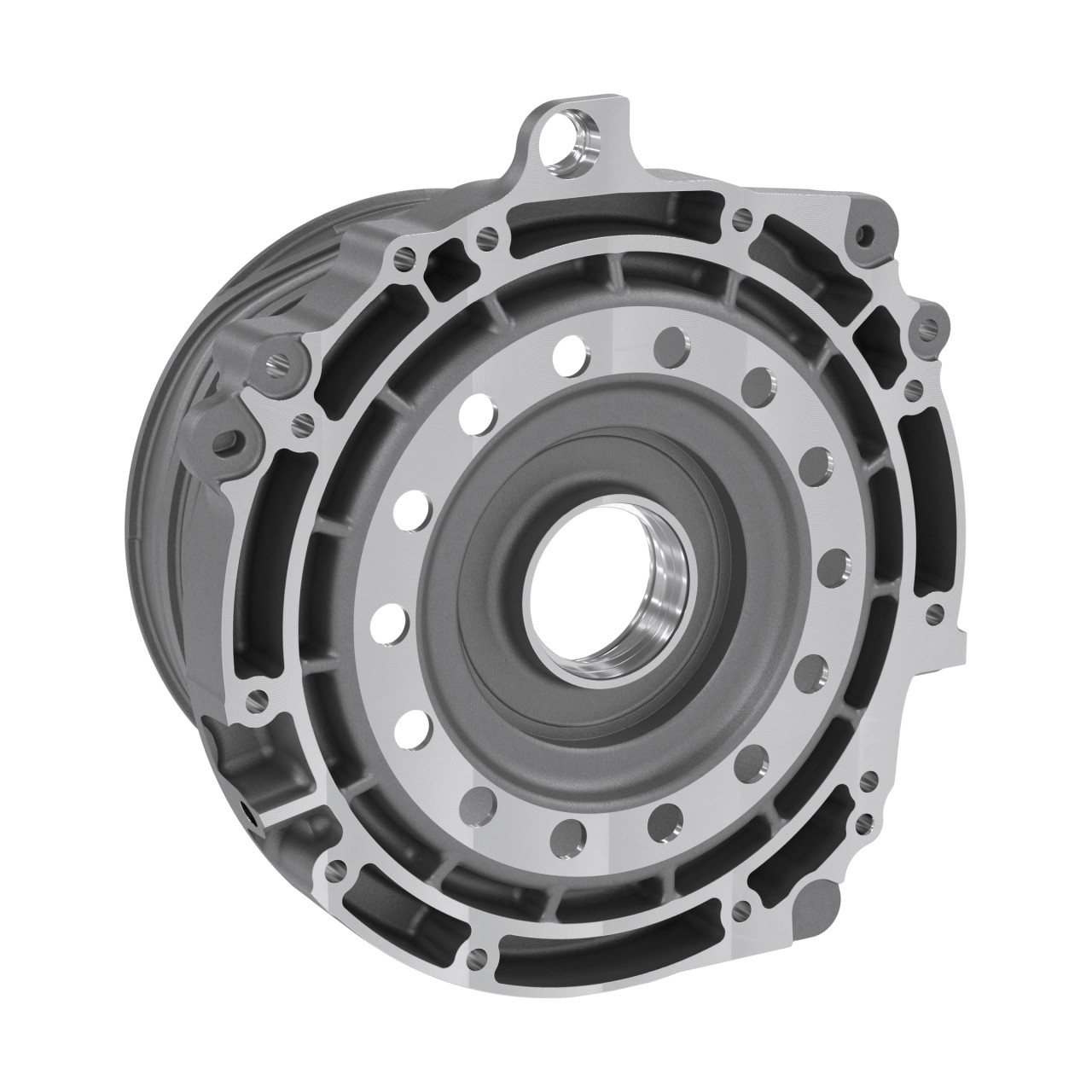Vertical milling and mill-turning are core expertises of the CHIRON Group. But how do the advantages of vertical machining come into play, especially in the production of stator and motor housings for e-mobility? Why is the CHIRON Group the benchmark here with the 22 Series and sets the standard in terms of best surfaces, highest geometric accuracy and short throughput times?
Machining with gravity
It all starts with physics. To be specific, with gravity. Vertical machining makes use of this when clamping the workpieces - both for manual loading and unloading and for automated feeding and removal. In addition, physics supports the machining process, for example when boring large diameters. The cutting edges on the tool are not negatively affected by gravity and rotate equally in the desired circular form. This also applies when machining e-motor housings, if heavy and long tools are used. The result: consistently excellent surface quality and the highest geometric precision.
»In comparison with horizontal solutions, vertical machining centers make better use of the forces of physics. This makes it possible to have consistently excellent surface quality and the highest geometric precision.«
Michael Rothenburger
Head of Core Workpieces Automotive
Whereas for horizontal machining, these tools usually need guide rails so that they don't tip towards an oval shape – with corresponding negative effects on the quality of the workpiece.
An additional major advantage for the best surface quality, precision and a damage-free process: Chips fall downwards, away from the workpiece and are discharged in a controlled manner.
Advantages of vertical machining with the 22 Series
Best surface quality and precision
Optimal power flow in the highly stable machine construction
No tilting moment caused by the weight of the tool
Tools up to 25 kg, 450 mm long and 300 mm diameter
All tool concepts possible, even without guide rails
Optimal clamping situation, workpiece is placed using its own weight
Simple clamping designs possible
Reduced set-up and maintenance times
But gravity alone does not ensure the required productivity. The 22 Series takes on these responsibilities.

Predestined for large quantities: the DZ 22 W, here with a clamped e-motor housing
Machining housings for e-mobility – all the possibilities with the 22 Series
Whether a stator, rotor or e-motor housing for diverse hybrid variants or for an all-electric car: Since 2020, the 22 Series from the CHIRON Group enables them to offer the appropriate manufacturing technologies for components with a diameter up to 600 mm. And a variety of options for dynamic, precise machining for reduced unit costs: 4- or 5-axis. Single or double spindle. For difficult machining with high torque. Manual loading or automated with a robot or gantry.
So, lots of options. However, according to Michael Rothenburger, Head of Core Workpieces Automotive, »nobody must remember them. What matters is that we can use these options and our expertise in automotive to design a manufacturing process that exactly according to the requirements.«
E-motor housings: one workpiece, many variants
»At the beginning, when e-mobility was having to establish itself and accordingly the variety of components was high, then the production concept to recommend itself was mill-turning, more precisely STAMA MT technology. Today, the next generation DZ 22 S mill turn system 8 machining centers are suited for this type of machining. In contrast, when machining large quantities, ideally the double-spindle machine types DZ 22 in combination with special tools that are used,« explains Gerhard Ulmer, Head of Sales Industries. In his view, the 22 Series machines offer »a huge advantage: The processes from the MT technology can be transferred one-to-one to series production. The operating personnel are already familiar with it. The components within the 22 Series are the same – keyword: spare parts – and automation can be scaled accordingly. All of this increases machine availability and reduces the overall operating costs.«
Complete simulated process before the first chip
As part of the project planning for a new machining solution with the 22 Series, there is a workpiece time calculation in 3D as well as a VNCK-based simulation. This means that at an early theory stage, a realistic process can be depicted in detail. The result: a collision-proof NC program for quick commissioning and a high level of process safety from day one.
Process advantages of the 22 Series
4- or 5-axis machining
Automated loading and unloading during machine operation with a workpiece change time of 3.5 s
HSK-A 63 with 12,500 to 20,000 rpm, up to a max. 200 Nm, 2 x 77 tools
HSK-A 100 up to 10,000 rpm, up to a max. 408 Nm, 2 x 52 tools, for difficult-to-cut materials
Highly dynamic 75 – 75 – 75 m/min
Chip-to-chip time of 2.2s with HSK-A 63 or 2.9 s with HSK-A 100
Also as a complete interlinked system, portal or robot




